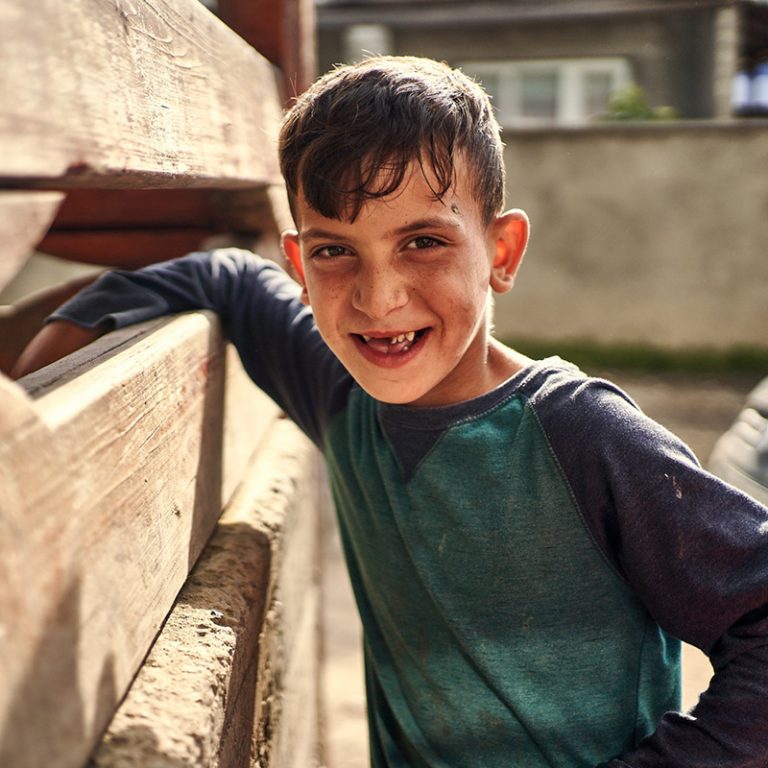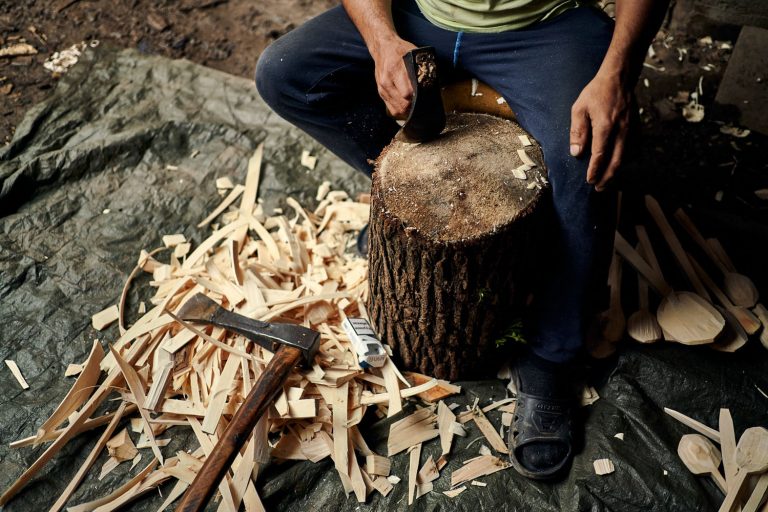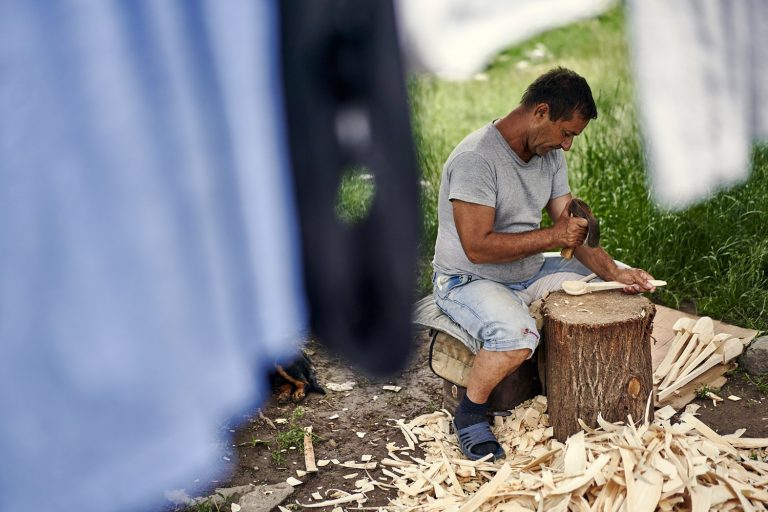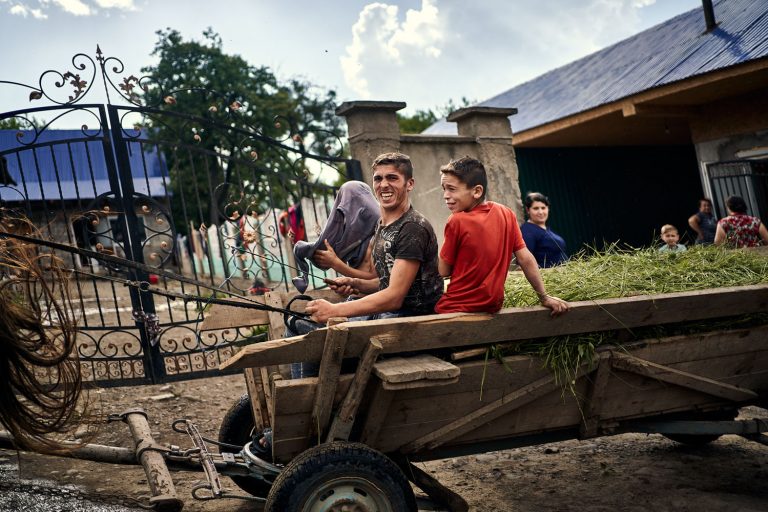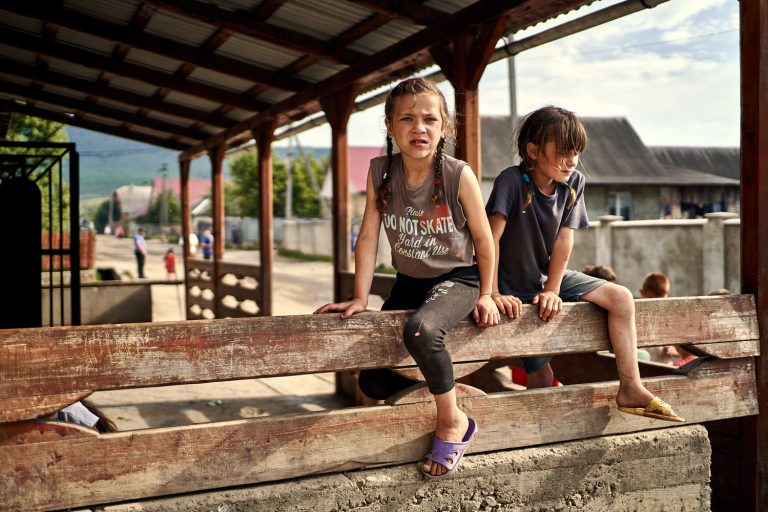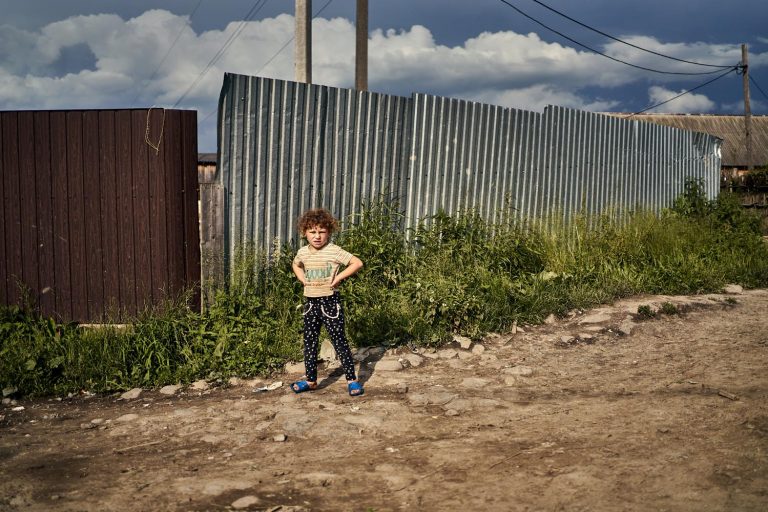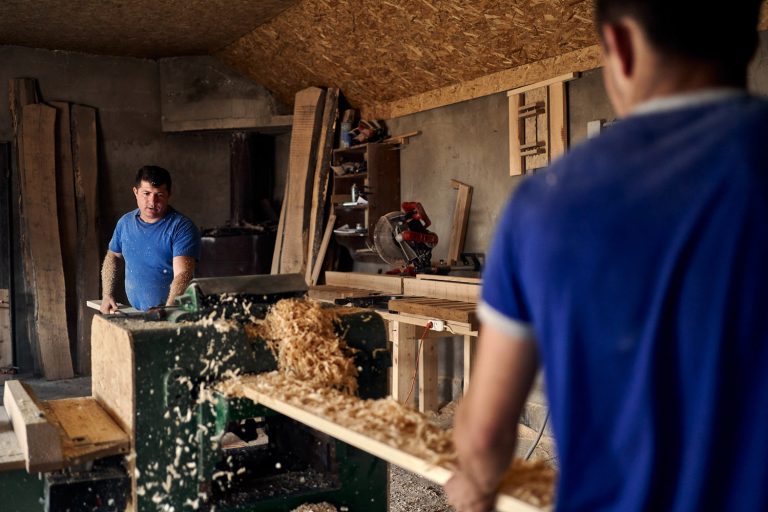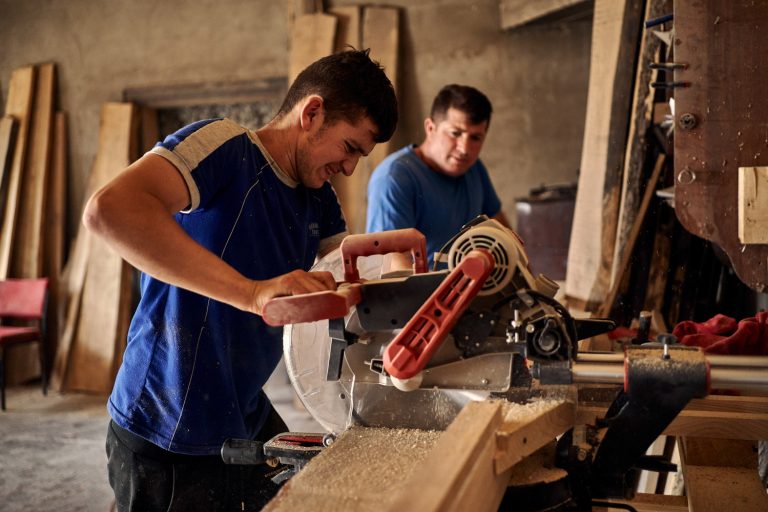Vlachs have been living on the lands of today’s Zakarpattia since the 13th century. However, this unique etnic group is not at all bound by the past. Till now, one official version of their origins simply does not exist, and even Vlachs themselves don’t know their own history — they pass on stories, heard from parents and great-grandparents. They live in large families, care for the community, are skilful with wood, are fluent in Ukrainian (even though at home they speak local dialect of Romanian) and live in the present moment.
Throughout history many peoples have been attracted to pastures high in the southern Carpathian mountains. While empires and nations have been collapsing and emerging everywhere around, here people were breeding cattle and lived on forests’ gifts, passing knowledge and crafts from generation to generation until now. This way Vlachs culture has been preserved in Zakarpattia region. Descendants of initially semi-nomadic groups of vlachs, who were cattlemen, continue speaking particular Romanian dialect and mastering traditional woodcraft. However, where and when did they come from or why decided to settle down in this very place remains a mystery to scientists and the vlachs themselves — their history has been passed down as a word of mouth and has been then forgotten.

Obava. Making spoons
Olena sits on the low chair in the small workshop next to the house. Behind her there are shelves full of tools and cans; an old bicycle wheel is hanging on the wall. Her husband Volodymyr Voloshyn is chopping wood. The hardwood floor is covered with wood chippings, timber cuttings and finished wooden spoons.
“What people used to do, that’s what we do now.”
For the craftsmen’s family, as well as for many vlachs from Obava, spoon making is a family business and the main source of income.
“We know how to make spoons and spatulas from wood. That’s all we do.”
Every day Voloshyn couple makes 40-50 spoons, to take to the market the next day. It is a multistage process that requires hard work.
“Husband makes blanks. He goes to the forest to source wood, makes blanks from the round wooden logs.”
Volodymyr first chops the wood with an axe. Then sits down on the chair next to his wife, takes an axe by its head and starts “planing” rectangular blocks with the blade. He chops off strips of wood to make narrow and long handles; after that he takes off small splinters from the wider part, where the bowl will be.
Olena planes the blanks down with a kitchen knife: starts with carving the shoulder, then shapes the bowl round and finally smoothes out the handle. From time to time she smiles and speaks to her husband in a local dialect of Romanian.
“We were taught to speak Romanian by mom and dad. They lived here, just like all of our ancestors.”
So Vlachs of Zakarpattia are bilingual: they speak local dialect of Romanian within their community and use Ukrainian outside:
“Our children learn two languages: Ukrainian and Romanian. Romanian is spoken at home, but when children go to kindergarten or school, they need to know Ukrainian, to stand up for themselves, to be able to explain to a member of staff what they want.”
slideshow
Vlachs learn traditional craft as children from their parents. Spoon maker Yurii Simochko from Obava learned the craft from his father and now passes his knowledge down to his son:
“My younger son learned how to do that, but the elder one didn’t want to. And the younger one knows how to make spoons now.”
Their language and craft is nearly all that’s left of Vlachs’ traditions:
“We follow Easter traditions, just as all Ukrainians. Easter, Christmas, main holidays, we don’t have our own traditions. We do what everyone else does. Some Vlachs are leaving to work abroad, but we keep making spoons, just like that.”
Local craftsmen tell that long ago tub troughs and bowls were made in Vlachs’ villages, but now there are only spoon-makers left:
“Old people knew how to make those things, but us, the young — we can’t do it anymore, only spoons, and that’s it.”
Mariia Voloshyna, Olena’s aunt, explains that the reason for this is exhaustion of nature’s resources:
“Back then there were forests, people were sourcing (wood. — ed.). And now there’s nothing left — the forests are cut down. There’s no piece of wood anymore suitable for a trough, for example, only for spoons. You can’t make a trough out of it.”
So nowadays, of all the traditional crafts, small Vlach communities in Zakarpattia only make spoons. Technology is almost the same for everyone. Men cut blanks out from willow, poplar, aspen or linden trees. Blanks are then planed: with an axe, as Olena’s husband does; with a special curved knife of a shape that is suitable for making a spoon bowl; or with ‘lyzhka’ — a round cutter for carving a bowl. All that is left is to hew and smooth out the rough surface of the spoons that are nearly finished. This is usually done by women. Next day they bring their products to sell on the market. Olena tells that Vlachs do not have a designated selling place, they go to markets in various Ukrainian cities:
“Kyiv, Zhytomyr, Lviv, Stryi, Kalush, Frankivsk, Uzhhorod, Chop — everywhere! Berehove, Svaliava, Volovets, Slavsk, Skotarske — we go everywhere, to all those places”.
However, neither craftsmen’ family nor other Valchs of Zakarpattia know how Vlachs started making spoons or where they came from.
Forgotten history is not rare for nomadic people with oral tradition. Knowledge and common ideas of the past get lost, and with no documentary sources to learn their own history from, descendants of such ethnoses do not dwell on the past.
“We don’t know. We were left here, so we’ve made a life for ourselves here.”

Where do Vlachs come from?
Vlachs’ origin is a mystery not only to them, but also to the scientific community. Researchers often connect the name of this ethnic group with Wallachia — a historical region that lies between Danube and Romanian part of the Carpathians. By the way, the name of a ‘walnut’ is connected with Wallachia — probably from there it has made its way to Ukraine.
In the early 14th century Wallachia was part of Danubian principality Muntenia. In the 19th century Wallachia was united with Moldavian principality — another monarchical state in Prydniprovia, north of Wallachia. This theory of Vlachs’ origin is presented in the Great Ukrainian defining dictionary. There ‘Vlachs’ is a name for a medieval population of principalities in Podniprovia and Transylvania — the famous homeland of Count Dracula. Therefore Vlachs are descendants of the people, which have been forming Romanian and Moldavian nations later in the 19th and 20th centuries.
However, this is only one of the versions. The word ‘vlach’ already existed in the times of Roman Empire. In the Old Germanic language ‘vlachs’ was used for inhabitants of romanized provinces or Rome. There were several provinces like that not far from the Carpathians: Dacia and Moesia on the lands of the modern-day Romania, Macedonia and Thrace (territories of the modern-day Bulgaria, Serbia, Greece and Turkey).
slideshow
After the Migration period, and Slavs crossing Danube (6th-8th c.) in particular, romanized provinces collapsed. Their inhabitants — ‘Aromanians’, ‘Thraco-Romanians’ or ‘Vlachs’ — changed their lifestyle to semi-nomadic: they started breeding cattle and would leave with the flock to the far pastures every spring. In the 11th century Byzantine author Kekaumenos called them ‘Vlachs of Balkans’. Supporters of this theory consider Vlachs to be romanized people of Balkans and assume that during the Middle Ages Vlachs were moving from Balkans up north, along the valleys of Sava and Great Morava rivers, and finally crossed Danube. Later, part of them reached Moravia — a historical region in the South-East of the modern Czech Republic. Others settled down in Transylvania, from where in the 13th century they reached Halychyna (Galicia), and later also Maramures — a historical region in the Carpathians, which is called Zakarpattia today.
The spread of so-called Wallachian Law across the territories of Western Ukraine in the 14th–15th centuries is considered one of the supporting facts of this theory.
However, in the middle of the 15th century, significant transformation of the word ‘Vlach’ occurred. Back then, in the Serbian law charters ‘vlach’ was a synonym for the ‘shepherd’. The same meaning was used in Moravia two centuries later. So, from an ethnonym ‘Vlach’ gradually turned into a term that no longer defined ethnicity, but rather affiliation with a particular social group, in this case with the group of cattlemen, shepherds. This theory makes it virtually impossible to determine the identity of the Vlachs of Zakarpattia, as there have at all times been many groups of cattlemen.
Wallachian law
Customary law that regulated legal relations of the rural population during the 13th-18th centuries mostly in mountain villages, where people were engaged in stock-breeding
Vlachs of Zakarpatiia
Because of this uncertainty, today Vlachs are considered to be the people who speak Eastern Romanic languages: Aromanians, Thraco-Romanians, Megleno-Romanians, Istro-Romanians and Morlachs. This ethnic group inhabited territories of Central, Eastern and South-Eastern Europe, in particular, there are settlements of Vlachs in Hungary, Serbia, Croatia, Macedonia, Albania, Greece and Bulgaria. Sometimes Poland is also added on this list.
In Ukraine Vlachs mostly live in villages in Zakarpattia: Obava, Myrcha, Vyzhnytsia, Poroshkov. There is only one settlement outside Zakarpattia — a village of Voloske in Dnipropetrovsk region, that was founded in the 18th century by captive Vlachs, once they were freed by Zaporozhian Cossacks.
There is no verified information if Zakarpattian Vlachs similarly came from Wallachia. In general, historical memory of Vlachs as complex ideas and knowledge about their common past is disappearing. So, it’s no wonder that they are often confused with other ethnic groups here, especially with the Romani.
However, such a comparison is based on stereotypical identification of both groups with Moldavians and Romanians. But, given the theory of Vlachs origin, such a simplification is incorrect. It is clear without immersing into their history, how different these two ethnic groups are.
Unlike the Romani, Zakarpattian Vlachs do not live in camps, have generally light skin tone and often light hair and eyes. Vlachs speak Romanian dialect, maybe Thraco Romanian (according to another version, preserved literary Romanian from 18th c.), that is foreign to Romani.

Poroshkovo. Horbat family
Vasyl, Serhii and Zhana Horbat, Vlachs from Poroshkovo village, who live next to the Romani camp, confirm that these two ethnic groups speak completely different languages:
“We understand the Romanians’ speech well. They’ve been coming here a lot lately. We understand the language of Romanians, but not of Romani people.”
Poroshkovo village is the biggest Vlach village in the region, over two and a half thousand Vlachs live here now (and this is almost half of all Vlachs in Ukraine at the moment), and their number is rapidly growing:
“The further, the more the population is growing. We have large families, with eight, nine or even ten children. There is an elder, who has a family of twenty children.”
Early marriages and large families are traditional for Vlachs. Families usually live close: parents build houses for newly-weds close to their own home. So children are raised by the whole family. Just twenty years ago Vlachs rarely put their children to study, from a young age kids would help around the house and work. Today, as Zhana Horbat tells, all children go to local school, even though not all finish their studies:
“I’ve attended Ukrainian secondary school for eleven years. All our children study in Ukrainian. Well, not all of them study until the eleventh grade. Some only study until the ninth, some until the eighth or seventh grade. There is a serious decline, as children are often sent to earn money, their parents are not keen to send them to school.”
From an early age Vlachs are involved in a family’s life. It explains to some extent the cohesion of Vlachs community. Unofficial leader of Vlachs is a ‘birov’ (a ‘judge’ in Hungarian). It is interesting to know that from all the settlements of Vlachs in Zakarpattia, birov is only in Poroshkovo. Although he is called a baron here, probably as a result of living so closely to the Romani for many years. Zhana and Vasyl Horbat tell that the first birov in Poroshkovo was their late father. The siblings recall, that he was chosen by Vlachs in the village, asked to lead the community:
“He became the ‘baron’ here. People elected him, as there was quite a chaos here. And father took matters into his own hands: making roads, resolving everything with people directly. He knew his way with people, he was very much respected.”
Birov in Poroshkovo does not have real powers. His informal jurisdiction extends only to Vlachs, while there are Ukrainians living in the village, there is a village head and a local government. Birov mostly acts as a kind of connecting link: he represents the interests of the Vlachs community and reaches an understanding with the non- Vlach part of the village.
slideshow
Zhana explains that her father was responsible for resolving any conflicts and affairs in the community and was a great authority:
“Even when a person with some problem comes to the head (of the village. — ed.), the head will first ask, ‘Have you been to the baron? Ask him first’. All the doors are open for the baron in the district or region, while for an ordinary person such doors might be closed. He has the right to resolve everything, he has to know people and all.”
After his father’s death, Vasyl took over the responsibility of being a birov. His cousin Serhii helps him to fulfill this new role. Together they also continue developing their father’s craft — carpentry.
Generally speaking, the traditional Vlachs’ craft in Poroshkovo is almost forgotten. Here, according to Vasyl, many people are involved in construction:
“For the last five-six years main income, on which Vlachs live, is from abroad. Many people work on construction sites as assistant workers, but there are also professional builders, who can do almost everything. Those who are not good in construction go to cut down forests. In Chernivtsi, Ternopil area, there are our people everywhere. They gather in groups of five-six people and leave for work. People don’t idle, they are looking for work, trying.”
It has started back in Soviet times: back then the whole families of Vlachs used to go to Kazakhstan for ‘mudbricks’, that is to work at a construction site. Vasyl remembers how his family was leaving on this trip. He was only six years old during the first of those trips:
“In Kazakhstan homes were built from mudbrick alone back then. There was no traditional brick there. Until the 1990s there was only mudbrick used. Father would take ten to twelve people, we were going in whole families, with women and children, to make that mudbrick.”
When Ukraine became independent, Vlachs of Poroshkovo continued to work in construction, but this time in Ukraine. And Vasyl’s father decided to master a new craft:
“When the Soviet Union fell apart, I remember how father came straight home and made a woodworking machine for himself and started his carpentry works. And so it went like this.”
Since twelve, Vasyl was helping his father to work on a homemade woodworking machine. Vasyl says he felt the urge to work with wood immediately and showed remarkable skills. He remembers how at fifteen he helped father to make a carving on the doors:
“I remember as if today, father wanted to do it himself, he just didn’t know how. And I heard him talking about this, then went and got it done within half an hour. I just took the drill, a piece of metal and welded one piece at the top, used my imagination, leaned against a drilling machine, and did it.”
Mudbrick
Raw clay bricks from a mixture of clay, straws, sand or other plant materials
Later Vasyl was working with wood on the plant in Khmelnytskyi, where he immediately requested from the manager to buy new woodworking machines. Vasyl tells that the manager first hesitated, because Vasyl was a self-taught specialist, but finally agreed to give him a chance to show his worth.
So carpentry became an important part of Vasyl’s life. Today he has his own workshop in Poroshkovo, where together with his cousin they make custom furniture, and where Vasyl also makes decorations for his own house.
So, Vlachs of Zakarpattia have preserved some of their cultural features, and proudly speak about their Wallachian origin. However they do not seek national self-determination or sovereignty and consider themselves to be Ukrainians:
“We are Ukrainian citizens. We don’t distinguish Vlachs or Romanians. Father once wanted to get a mark ‘Romanians’ on our passports. We were never offered to have our own (Wallachian. — ed.) citizenship. Because if we were to have our own citizenship, we would need our own president, schools, and everything. We are not seeking this. All that we have is Ukrainian.”

